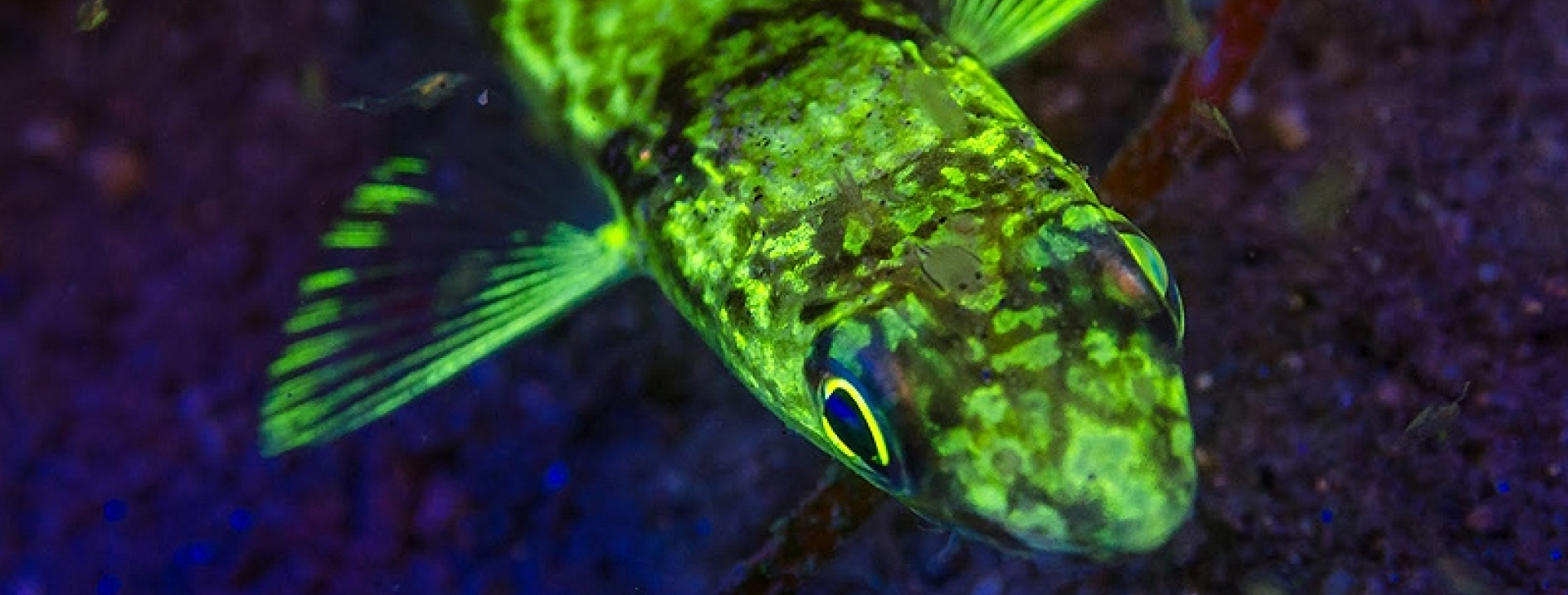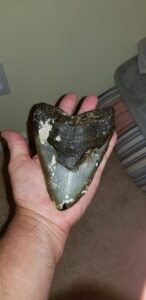

“Megalodon” is an extinct species of shark (Carcharocles megalodon) that lived approximately 23 to 3.6 million years ago (MYA) during the Cenozoic Era 66 MYA to present. More specifically, they exited during the Miocene Epoch 23 to 5 MYA and into the Pliocene Epoch 5 to 2 MYA. It is considered one of the largest and most powerful predators to have ever existed in Earth’s oceans. The megalodon is estimated to have reached lengths of up to 60 feet (18 meters) or more, making it significantly larger than the largest recorded great white shark.
Megalodon had a massive, robust body with a conical snout and large, serrated teeth that were triangular. These teeth were adapted for hunting large prey, including whales, seals, and other marine mammals. Megalodon likely used its powerful jaws to bite and crush its prey, relying on its immense size and strength to overpower even the largest of marine animals.
Despite its formidable size and predatory prowess, megalodon went extinct around 3.6 million years ago for reasons that are still debated among scientists. Factors such as changes in ocean temperature, declining food sources, and competition with other predators may have contributed to its demise. Today, megalodon is primarily known from fossilized teeth and skeletal remains found in various marine sediments around the world, providing valuable insights into the ancient history of Earth’s oceans and the evolution of marine life.
“Megalodon diving” typically refers to a form of recreational diving where individuals explore underwater environments in search of fossilized remains or evidence of this extinct prehistoric shark.
Megalodon diving enthusiasts often seek out areas where fossilized megalodon teeth are known to be abundant, such as coastal regions, riverbeds, or deep-sea locations where sedimentary deposits containing fossils are present. Most often, in the open ocean, they are found along the edges (ledges) of ancient river beds that were created during the melting of ice at the end of ice ages where the sea level was hundreds of meters/feet below current levels. As the ice melted it would “pick up” these teeth and “stack” then along the bends in the river beds to be found millions of years later by divers. These divers may use scuba gear or other diving equipment to explore these underwater environments in search of megalodon fossils.
While megalodon diving can be an exciting and rewarding experience for enthusiasts interested in paleontology or marine biology, divers need to adhere to safety protocols and regulations governing diving activities in their chosen locations. Additionally, divers should respect the environment and avoid disturbing or damaging underwater ecosystems or historical sites during their dives.
Megalodon diving, like any form of recreational diving, carries inherent risks that must be carefully managed to ensure safety. While diving in search of megalodon fossils itself may not be inherently dangerous, it does involve typical risks associated with scuba diving, such as decompression sickness, nitrogen narcosis, equipment malfunction, underwater hazards, and strong currents.
However, specific risks associated with megalodon diving may include:
**Deep Diving**: Megalodon fossils are often found in deep water or underwater caves, which may require divers to descend to significant depths. Deep diving presents additional challenges, including nitrogen narcosis and decompression sickness, which can be dangerous if not managed properly.
**Equipment Failure**: Technical diving equipment, such as rebreathers or mixed gas systems, may be used in megalodon diving to facilitate deeper dives. Equipment failure in these complex systems can lead to serious injury or death if not addressed promptly.
**Environmental Factors**: Environmental conditions such as strong currents, low visibility, and unpredictable weather can pose additional risks to divers during megalodon dives.
To mitigate these risks, megalodon divers need to undergo thorough training in advanced diving techniques, including deep diving, cave diving, and technical diving. Divers should also ensure they have appropriate certifications, equipment, and emergency procedures in place before attempting megalodon dives. Additionally, divers should always dive within their training and experience level, adhere to established safety protocols, and dive with a buddy or dive team for added safety.
Overall, while megalodon diving can be an exhilarating and rewarding experience for enthusiasts, it requires careful planning, preparation, and adherence to safety guidelines to minimize the inherent risks involved.
Megalodon teeth can be found in various marine sediments around the world, particularly in areas that were once shallow coastal regions or nearshore environments when megalodons inhabited the oceans. Some common locations where megalodon teeth have been discovered include:
Overall, megalodon teeth can be found in a wide range of geological settings, but they are most commonly discovered in marine sediments associated with ancient coastal environments or underwater geological formations. Finding megalodon teeth requires careful observation, patience, and sometimes a bit of luck, but they can provide valuable insights into the ancient history of Earth’s oceans and the evolution of marine life.
If you have any questions, comments or suggestions – PLEASE don’t hesitate to contact us.